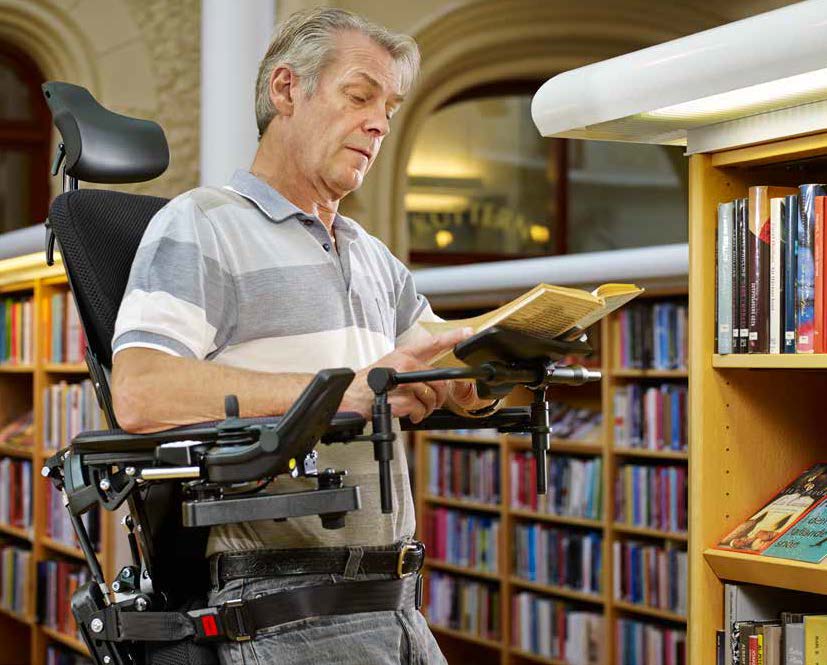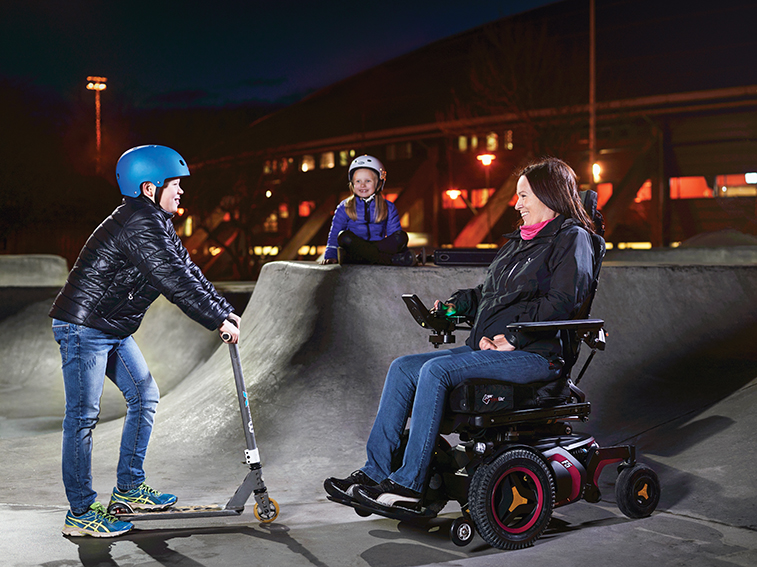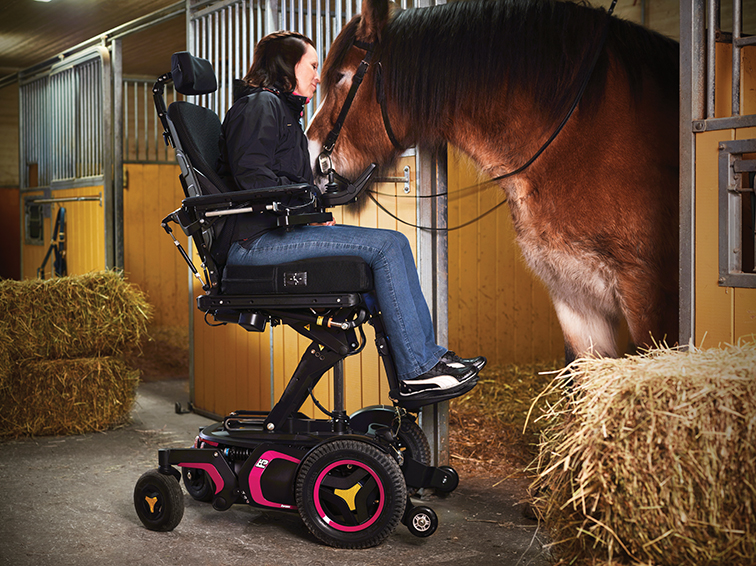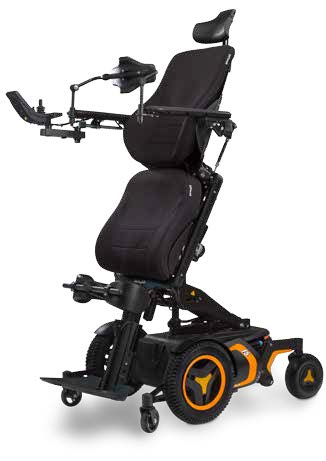Standing and walking has become our default way of unassisted moving about for much of our lives. If we can longer achieve this basic functionality, due to disease, injury or just ageing, it has both physical and psychological consequences.
Our partners Permobil have carried out extensive research to show the benefits of a standing wheelchair. The years of R&D have resulted in the latest Permobil F5 Corpus Vertical Stander power chair.
Here we share some of the key insights from the Permobil research and the benefits to users of a wheelchair with standing function. A standing wheelchair is a mobility device and a standing device, this combination offers many advantages. Read on to find out why.
Please bear in mind that not every benefit relates to every person and/or condition or injury. It is important that with all cases a full appropriate assessment is carried out. The MMS Medical team of product specialists will be delighted to assist you with any queries you may have about standing wheelchairs.
“ I really feel the difference, when I stand, I can really breathe more deeply and it helps me feel comfortable “ Kevin, Permobil User with Paraplegia
Breathing Easier
Many people with a physical disability will suffer from some degree of respiratory compromise. Respiratory dysfunction can be due to restrictive or obstructive disorders reducing the amount of fresh air available for the lungs. Among the consequences are fatigue, headaches, high blood pressure and in more serious cases leading to pulmonary infections. Standing in a wheelchair reduces pressure on internal organs and lung volume increases. With the increased lung volume, blood oxygenation improves and overall breathing will be easier.
Enhancing Blood Circulation
Immobilization will inevitably lead to cardiovascular deconditioning. As standing has beneficial effects on breathing which in turn can also give positive effect on circulatory function. Standing reduces swelling in feet and ankles.
Improving Bladder Function
Urological function and dysfunction is a focus of much concern among many wheelchair users. Standing reduces the risk of hypercalcemia and hypercalciuria and the potential kidney and bladder stones. Standing also reduces the risk for urinary tract infections.
Improving Bowel Function
As in the case with the urinary system, the gastro-intestinal system is typically affected in many wheelchair users. Both immobilisation and paralysis contribute to the common problem is constipation. Standing stretches the colon and stimulates bowel movement thus reducing the risk for constipation.
Stronger Bones
Many wheelchair users are immobilised and some are unable to perform physical activity. With long term medication people with rheumatic disorders or multiple sclerosis mare also at risk of osteoporosis. People with congenital disorders tend to develop skeletal deformities like scoliosis and joint deformities. In the absence of any physical activity weight bearing by standing reduces loss of bone mineral density, assists in the delaying of skeletal deformities and better positioning of the shoulders improves a uers grip and upper extremity mobility.
Reducing Contractures and Spasticity
Standing improves movement ability and range of movement. Muscle stretch combined with weight loading improve muscle tone more than just stretching alone. A standing wheelchair can be a way some individuals can treat and prevent contractures independently. Standing also has positive effects on reducing excessive spasticity. These are immediate and significant for standing wheelchair users, because they can stand frequently throughout the day when spasticity management is needed. Studies show that reducing spasticity contributes to safer transfer, better sleeping and improved positioning in the wheelchair.
Relieving the Pressure
Paralysis and reduced mobility leads to long periods of sitting. When tissues stay squeezed for prolonged periods, tissue damage will occur. Such wounds are called pressure ulcers. By offering the option of standing to a wheelchair user, they will have the additional means of regular pressure relief of pressure areas that are active while sitting.
Freedom to participate
“ For me, a standing wheelchair is synonymous with freedom. Standing has many instantaneous and beneficial effect on my everyday life.” Xavier, Permobil User with paraplegia.
Being able to stand is considered a part of an active lifestyle. Standing with a wheelchair offers the individual the possibility to increase their functional level, which can lead to greater independence, greater participation in their environment, social life and other activities. The combination of medical, functional, psycho-social and economic benefits positively influences a person self-esteem and psychological well being resulting in an overall improvement in quality of life.
Greater Independence
“ At home you can live more normally with a standing wheelchair, you don’t need as many adjustments done to your home like closets and kitchen for example. “ Jean-Paul, Permobil User with paraplegia.
Standing with a wheelchair leads to greater independence, often requires less assistance for daily task and in some cases equires less modifications to their home or at work. This combination product – a mobility device and standing device – can lead to improvements in both health and well being of the user.




